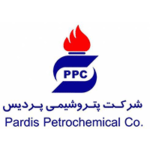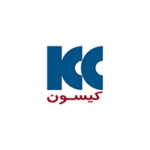Lining is a thermosetting resin coating based on resins that are processed by chemical reaction at normal ambient temperature. Linings are chemical-resistant coatings with a polymeric structure used to prevent corrosion of concrete and metal surfaces, to increase the lifespan of structures, prevent fluid penetration into reservoir beds, avoid fluid reactions with concrete surfaces, and prevent environmental pollution.
Achieving a high-performance coating or lining depends on various factors. The supply and selection of materials should be done according to the type of corrosion, the type of fluid, the type of substrate and the environmental conditions. Additionally, the execution method, skilled and experienced workforce deployment, and the familiarity of supervisors and inspectors with operational procedures are essential for successful lining implementation.
Adhering to the technical specifications and principles provided by experts ensures the attainment of a quality protective coating.
Lining protective systems are employed in wastewater neutralization tanks, mixers, ponds, exploitation and separation units, and in general environments involved with corrosive substances or acidic and alkaline vapors.
Various lining types have been defined, and a few are mentioned below:
(Listen to this helpful article in the form of a podcast)
- F.R.P. Lining based on Vinyl Ester Resins
Vinyl ester resins exhibit unique chemical resistance, high compressive and bending resistances, and are suitable for corrosive environments with acids, organic solvents, and some oxidizers. (The use of vinyl ester resin along with anti-corrosion fillers, non-glass fibers and glass fibers is common.)
- F.R.P. Lining based on Epoxy Resins
Epoxy resins offer relatively good chemical resistance and exceptionally high adhesion, with a wide variety available. Using epoxy resins along with non-glass F.R.E. fibers and glass G.R.E. fibers enhances tensile, mechanical, and chemical resistance.
Other linings include rubber linings, bitumen, polyethylene sheets, etc., which are used alone or in the form of membrane layers, depending on the type of system definition.
Types of Lining
Linings have different types, broadly categorized into:
- A) Hard Linings
- B) Buried Membrane Linings
The advantages and disadvantages of various kinds of coatings should be considered when deciding on the desired lining type, including hard surface coatings susceptible to abrasion, erosion, water hardening in maintenance equipment, and other risks.
These coatings are made from materials like cement concrete and mortar, asphalt materials, brick, and stone.
Although the initial cost of all these linings is generally high, cement concrete linings are the most cost-effective due to their low resistance and are usually used in cases prioritizing structural safety.
Cement concrete linings are among the most common types utilized successfully in India and elsewhere worldwide.
Compared to other linings, cement concrete linings excel in channels due to their higher resistance to erosion and faster water transmission.
Lining Used in Canals
Generally, the following types are used for lining:
1- Concrete Lining: Cement concrete lining made from selected materials provides excellent services.
Despite having relatively high initial costs, they have long lifespans, making them economically viable.
Cement concrete linings are more suitable for main canals that have large amounts of high-velocity water.
However, a robust substructure to handle any cracking in the foundation is essential. In areas where groundwater is likely to rise above the lining reverse surface, causing unnecessary uplift pressure, drains are placed beneath the lining to release the water and mitigate pressure.
Shotcrete: A type of cement mortar consisting of one part cement and four parts sand applied on the canal through a pump nozzle system. The equipment units used for concrete are relatively small and are easily movable. They are suitable for lining small sections, repairing old linings, and placing linings around curves or structures. This type of lining is popular due to specific advantages like not requiring a skilled mason or rigid quality control.
Canals covered with linings are generally called ‘Poka’ canals. Estimates suggest that water losses due to water leakage in irrigation canals may account for 30% to 50% of the allowed water of the canal in the deviation of the mean error. This minimal amount of water loss is not possible in canals without linings; for instance, in India, water sources available for irrigable areas are limited. Therefore, lining of canals is necessary to reduce or even eliminate leakage losses.
Types of Canal Linings
The coverage is categorized into four headings:
- Hard Surface Coating: Coatings under this category include:
1.1. Cement Concrete Coating:
This type of coating possesses exceptional hydraulic properties but is limited due to its costly nature. The success of this type of coating depends on the strength of the underlying layers to a large extent. Bed pieces and precast pieces of the sides are prepared at regular intervals. These pieces act as scales for coating and preparing the underlying layers. To minimize water leakage, concrete coating gaps are always placed among the pieces.
The coating thickness depends on the desirable impermeability and structural strength. In usual cases, for M150, the coating thickness ranges from 5 to 10 centimeters, depending on the amount of water passing through the canal. If using weaker M100 concrete, the thickness varies from 5.7 to 15 centimeters. The concrete coating is susceptible to cracking due to water contraction and weather changes. Incorporating reinforcement or creating shrinkage in gaps may prevent coating breakage. For consecutive utilization of coatings, only transverse or both transverse and longitudinal grooves within a range of 3 to 5 meters should be used. When the coating is panelized, slabs are placed in replacement sections for a minimum of one day. The grooves between the connections must be filled with suitable sealing materials. Various types of connections available in concrete coatings are shown in Figure 20.1.
1.2. Cement-Sand Mortar Shotcrete:
In this type of coating, a two-part mixture of sand and cement (in a one-to-four ratio) is provided and sprayed onto the substrates using pneumatic pressure. This method is more costly than uniformly thick cement concrete coating. Its facilities are situated in overlay connections with old cement coatings and create stone-like surfaces in gaps. This type of coating is not common.
1.3. Precast Cement Coating:
In this method, precast cement concrete slabs are prepared at the factory and then used for canal coatings. Concrete blocks are usually used with dimensions of 50 cm length, 25 cm width, and 5 cm thickness. The blocks are arranged in a sequence based on their bonding ability and their ability to be filled with waterproofing materials. Slabs are placed are placed on sufficiently compacted sub-layers. In precast slabs, the concrete should not be weaker than grade M150.
1.4. Cement Mortar Coating:
This material type is never used alone as a coating material. Essentially, it is used as a sandwich material between brick layers. The thickness of this layer may vary from 1 to 4 centimeters. This type of coating is also not very common.
1.5. Mosaic Brick Coating:
This type of coating is widely used for canal coverage, including the Rajasthan Canal Project. The coating can be single or double-layered. The substrate is well-prepared, and the first layer of mosaic or brick is placed on 15 millimeters of mortar cement at a ratio of one to six. A 15-millimeter layer of mortar cement at a ratio of one to three is then placed on the first mosaic layer, followed by the second mosaic layer. The second mosaic layer should be placed in such a way that it covers the gaps of the first brick layer. The usual size for mosaics is 30 * 15 * 5 centimeters.
The main advantages of brick coating are:
Regular builders can install mosaics.
Circular works in corners can be easily done without a template.
No strict quality control is necessary.
No need to make extensive connections.
The single-layer mosaic coating consists of one mosaic layer on top of a 10-centimeter thickness of mortar cement layer at a ratio of one to three that has been well-prepared as a substrate. A 20-millimeter layer of cement coating (plaster and cement) at a ratio of three to one is also placed on the mosaic, which gives it a smooth surface.
If the coating is lost in certain sections, it can be easily repaired. The coating of the side substrates are removed, and new coatings are replaced.
1.6. Stone Coating Masonry:
This cover is made of uncoated stone blocks. The substrate is prepared in a normal way, and stone blocks are placed on it in cement mortar. This cover can also be made of stone-covered blocks, but economically, it is not viable. This coating requires very high resistance to create flow despite high roughness.
1.7. Concrete Asphalt Coating:
A mixture of asphalt and gravel is provided and placed at a temperature of about 200 degrees Celsius. The placed layer is covered with a layer of soil at a minimum thickness of 30 centimeters. The soil layer creates a kind of protection for the cement asphalt layer.
-
Buried Membrane Coating and Protection:
In this type of coating, a thin layer of waterproof membrane is placed on the prepared substrate, and then covered with a protective layer of soil or sand. The protective layer protects the coating from harmful external factors, and the membrane itself creates a kind of impermeability in the coating.
Common uses of buried membranes are likely as follows:
2.1 Sprayed Asphalt Coating:
In this method, hot asphalt is sprayed on the substrate, acting as a type of barrier against water.
2.2 Pre-made Asphalt Membrane Coating:
In this type of coating, paper, fabric, various materials, etc., with asphalt coating, create a barrier against water leakage. All these structures are available in the form of rolls. The membrane is placed on the prepared smooth substrate layer and is well covered with soil or sand.
2.3 Plastic or Rubber Membrane:
In this case, plastic or synthetic rubber is used as a waterproof membrane. Countless numbers of this type of polyethylene membrane polymer have shown promising results. These coatings are easily susceptible to cracking by sharp stones or growing plants, so such substrates must be completely leveled and treated to prevent plant growth.
2.4 Bentonite and Clay Soil Membrane:
This type of membrane has not yet been used for irrigation canals. The most important feature of bentonite is its swelling when absorbing water. During swelling, this membrane becomes completely resistant to water leakage. The bentonite layer is formed by placing a 2.5 to 3 cm thick layer of concrete on the prepared substrate. And this layer is finally covered with a protective blanket made of soil or suitable pebbles.
- Soil Coating:
The coverings in this category of coatings include:
(i) Soil Cement Coating:
In this coating, 2 to 5 percent cement is dry-mixed with high-quality soil, 35 percent of which passes through a 200-mesh sieve. This mixture is made in a dry soil condition. Water is sprayed onto the mixture and compacted onto the prepared substrate. The lining remains wet for a week before water flows in the canal.
(ii) Clay Pit Cover:
The clay pit is first prepared by extracting the clay, then by exposing it to sunlight and air. After a week or ten days of exposure to sunlight, water is added, and the clay is kneaded. The kneaded clay is recognized as clay pit. This kneaded clay is placed along the perimeter of the canal to act as a lining. The thickness of the clay pit cover is about 30 centimeters. As the lining is protected by a layer of soil, it will not deteriorate if the canal is closed for a few days.
(iii) Sodium Carbonate Coating:
We provide a combination of local soil by mixing 10 percent clay and 6 percent sodium carbonate. Water is added to this mixture and it is placed in a 10-centimeter thickness. This coating is used for water sources and small canals, but it cannot be used for larger canals as it lacks durability.
-
Porous Coating:
In many cases, the ground water table is usually higher than the main canal’s bed level. Porous coatings are highly recommended in such conditions. The porous coating allows water pressure to be released, thus limiting backflow pressure. A 15-centimeter reverse filter is scattered in the prepared substrate, and the paving stones are sealed by hand. If stones are unavailable, bricks may be used. This type of covering may not create impermeability, but it is used for resource drainage.
Key Features in Proper Coverage of Canals: The following are the key features in suitable coverage of canals:
- The coating must be completely watertight.
- The roughness coefficient of the coating material should be low to make the section hydraulically efficient.
- The covering must be strong and durable.
- Initial costs and maintenance costs should be low.
- The coating must not incur damage by walking on it.
- The coating must be resistant to plant growth and attacks by burrowing animals.
- The coating must not incur damage by stopping the water flow.
Stages of Design:
The following information needs to be known before designing and starting work on a canal:
Canal discharge (Q).
Roughness coefficient (N).
Longitudinal slope (S).
Source slope.
Permissible flow velocity (V).
Use the following equations:
Stages:
Knowing the limited value of V, N, and H.M.D. (R), find S from the equation.
From an expression, for example, bed width (B) and depth (D) by calculating the value in R=A/P. From another equation, for example, B or D from the equation Q = AV. By solving the formed equation in (ii) and (iii), find the unknown values of B and D. For different values of side slopes, cross-sectional areas, wet areas, including B and D, are given below. The radius of the arc is taken equal to the water depth for controlling the lower edges.
Note: If the canal is not straight, the loss increases due to resistance.
The design of covered canals can be done using page 20.1. This chart is created by accepting 1/21: 1 side slope, NI = 0.018, and a slope of 1 in 1000. This chart can also be constructed for other values of N and S.
Page 20.1: The method of using this chart for other values of N and D is explained as follows: The chart is as follows for other values of N:
For other values of slope (S), the following chart can be useful:
Advantages of Canal Coating:
The following are the advantages of canal coating:
Water leakage losses are practically minimized.
Secondary canal costs decrease.
The canal starts with increasing speed.
Canal sections reduce significantly, resulting in increased speed, and consistent discharge can pass through different cross-sectional areas.
Earthwork costs decrease so that smaller sections can be structured.
Deposition does not occur, so canals flow significantly faster than the sedimentation rate.
No erosion occurs in any part of the canal.
Less land width is needed for the canal.
Plant growth in the canal decreases.
Harmful salts resulting from the collision of soil and water in the canal water, do not get inseparable.
More vertices are made available for the power generation as the covered canals are placed on the smooth gradient.
The possibility of canal rupture is limited.
Additional areas are likely to be irrigated using stored water with cover.
The possibility of water loss from adjacent locations decreases.
Evaporation losses decrease, and with increased speed, the water spends less time to reach the outlet.
Disadvantages of Canal Coating:
The following are the disadvantages of using canal coating:
Heavy raw material costs are required.
When the cover gets old, cracks develop.
It is very difficult to check leakages caused by cracks.
Coating connections are always problematic.
The outlet position is not easily changeable.
Coated canals lack coastal steps. If someone or an animal accidentally falls into the canal, lifting them becomes very difficult. To solve this issue, staircase areas should be placed regularly along the canal.
Coated canals are draggy. Only those who can swim can enter them.
Since water leakage is entirely stopped, rows of trees cannot grow along the canal, like Kucha canal.
To create higher speeds, the longitudinal slope in coated canals must increase, which may lead to deviation from command in the area.
Covering materials like clay, bentonite, etc., are easily damaged under the passing feet of animals.
Financial Facilities:
In order to justify coated canals, it is necessary to check the high costs of coverage on the one hand and the profitable value of coverage on the other hand.
For coating to be financially viable, the profit income must be equal to or greater than the construction costs. In other words, the profit index must always be greater than one compared to the production costs index.
For more information, feel free to contact us.





















